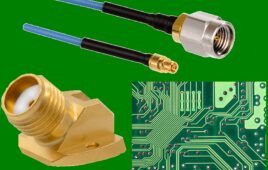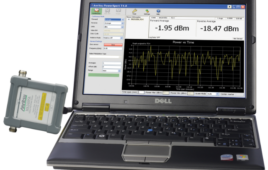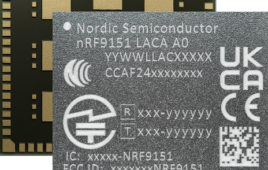Analog Devices and the Analog Devices Foundation have provided students at UMass Lowell with spectrum analyzers, signal generators, oscilloscopes, and other equipment.
Lowell, Mass. — What do you do with test equipment that needs a new home? You put it to work educating future RF engineers. Recently, Analog Devices donated 23 pieces of test equipment to UMass Lowell, augmenting its RF test-equipment collection and opening a new RF lab. The equipment value is some $165,000, augmenting an already hearty collection. Plus, the Analog Devices Foundation donated an additional $125,000 so the university could equip three classrooms for remote learning. “The remote-learning classrooms were upgraded with camera, remote tracking capabilities, computers, and lighting,” said Bryan Goldstein, VP of the Analog Devices Defense and Aerospace Business Unit.
“Books and learning are just a piece of the puzzle,” continued Goldstein. “It’s the hands-on, real-life, day-to-day opportunity to get your hands in the lab on real equipment is where the excitement of experimentation comes from.”
“This lab brings together the relationship that UMass Lowell shares with Analog devices,” said Joe Hartman, UMass Lowell Provost and Vice-Chancellor for Academic and Student Affairs. Hartman, who started at UMass Lowell as Dean of Engineering, addressed the lab gathering by adding “When I started, Rick Hess of Analog Devices was on the board. He introduced me to Bob Broughton with whom we started doing senior design projects. This lab is part of the next step in our relationship with Analog Devices. It helps our students learn what they need to be successful in our industry. That’s been moving toward the RF and Microwave industry for some time.”
The lab benches are organized by maximum frequency, ranging from 3.2 GHz to 40 GHz. Test benches that cover frequencies around 3 GHz are quite useful today. After all, that’s today’s “sweet spot” of 5G radio spectrum. Many 5G connected IoT devices do and will operate at those frequencies.
The video below provides a quick tour of the new lab.







Good investment but leys see it in action. I don’t see any cables into any if the equipment. intermodulation, interference, frequency sharing. Tackle some of the issues with limited bandwidth and the need for high data rates. Lots of challenges out there. Way different than cdma, amps, pioneer preference licenses. Only the really smart leading edge, bleeding edge engineers survive.
“Only the really smart leading edge, bleeding edge engineers survive.”
What do you mean by “survive?” There are many ways to survive. Some engineers go into marketing or sales. Some go to law school or medical school. I once had an eye doctor with an EE degree. Does that mean he didn’t survive? Some engineers go into finance. Some even become editors who get through 20 years of layoffs without losing a job. Are we not survivors?
An applications engineer at NI went into marketing and is now CEO. Does that mean he didn’t survive?
“I don’t see any cables into any if the equipment.”
Could it be that the professor asked students to clean up the lab for the day?
Steven,
Of course you don’t see any wires, the instruments just arrived. Or they’re about to get shipped to the UMass lab. I assume the school has plenty of test leads, but students first need an introduction to the instruments’ operations and opportunities to read the manuals. That’s what smart engineers would do, right, RTDM?